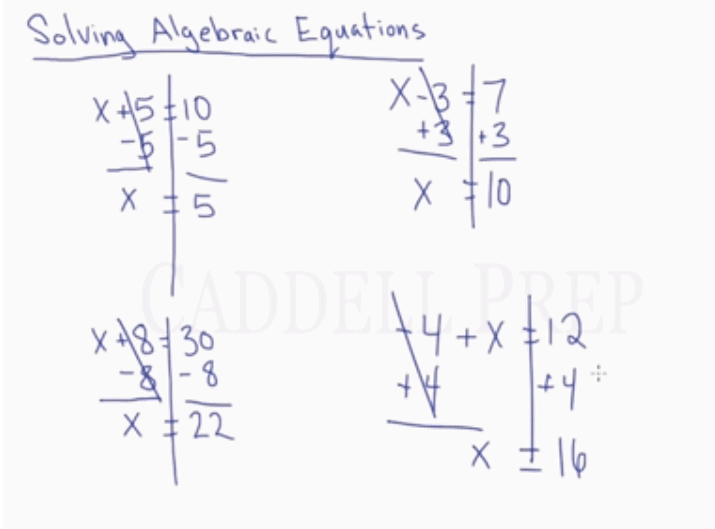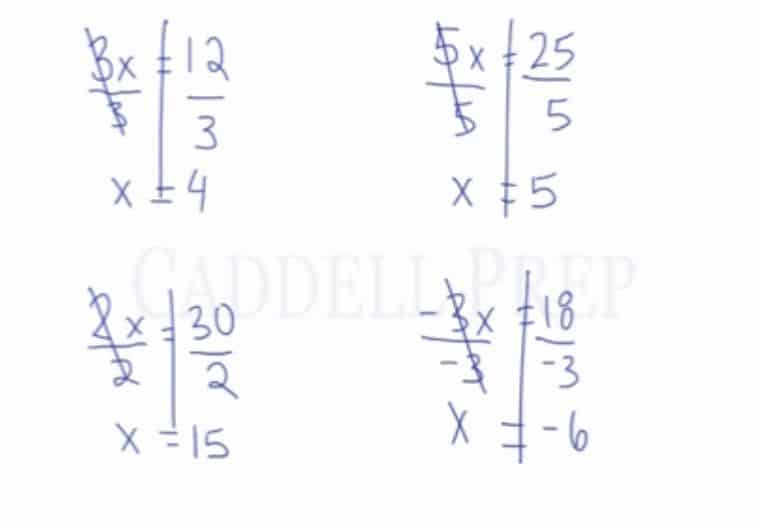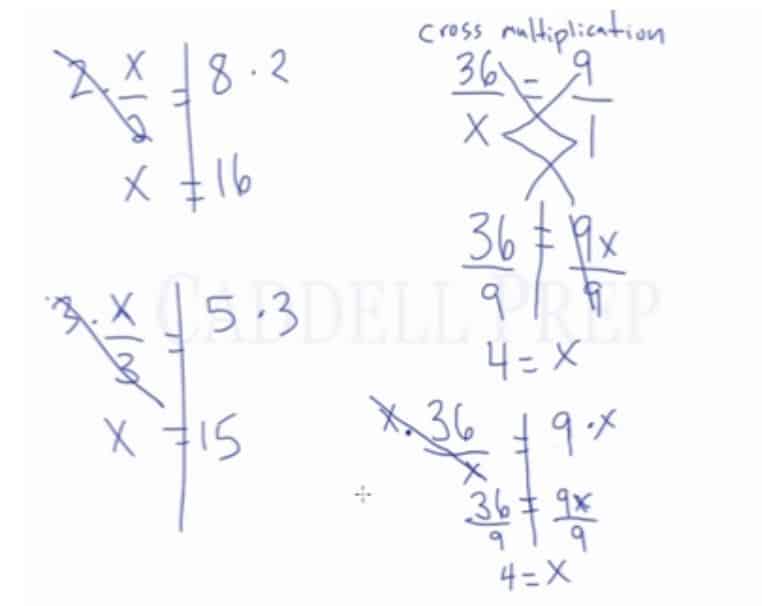In this video, students will be learning how to solve algebraic equations using inverse operations. After you finish this lesson, view all of our Pre-Algebra and Algebra 1 lessons and practice problems.
For example:
To solve for , we will use inverse operations.
Since is being multiplied by 9, the inverse operation would be to divide both sides by 9.
Divide by 9 on both sides
Examples of Solving Algebraic Equations (One-Step)
Examples 1
We have to eliminate by subtracting
on both sides
Therefore,
Now, we have:
Examples 2
To solve for , we will use inverse operations.
Since is being multiplied by
, the inverse operation would be to divide both sides by
Now, we have:
Video-Lesson Transcript
In this video, students will be learning how to solve algebraic equations using inverse operations.
Solving Equations that Have Addition or Subtraction
Let’s start off with some simple ones.
To get the value of we have to subtract
from both sides of the equation.
It may be useful to draw a long vertical line through the equal sign. For you to remember that whatever you do on one side, you have to do on the other side, too.
The answer is .
Let’s have more examples.
We have to subtract from both sides.
And we will come up with .
Here, we have .
To get rid of we have to add
on both sides.
Now we have .
Also, let’s do .
To get rid of we should add
.
So we’ll have .
Solving Equations that Have Multiplication or Division
Let’s now look at some examples involving multiplication.
So for example, we have . This means
.
To do this, we have to identify that the inverse of multiplication is division.
So we have to divide both sides by .
We will come up with .
More example:
Then divide both sides by
The answer is
Let’s have then divide both sides by
to get
.
Another example is .
Don’t be tricked by the negative sign. It is not a subtraction sign.
So to get rid of we just have to divide both sides by
.
And the answer is
Now, let’s have examples involving division.
So we have to do the inverse of division which is multiplication. Let’s multiply both sides by .
And we get .
Let’s also try . Then multiply both sides by
. We’ll have
.
Here’s another method to solve equations involving division. You may have seen it before. It is called ‘cross-multiplication’.
We have
To do cross-multiplication, it’s important to show both sides of the equation as fractions. So we should have .
What we’re going to do is .
Then .
We have .
We still want to isolate so we’ll divide both sides by
.
The answer is .
Solving Equations that Involve Cross-Multiplication
Now let’s solve it without cross-multiplication.
Let’s multiply both sides by and we have
.
This is similar to the one above.
So let’s divide both sides by and we still find that
.
To sum up, for simple algebraic equations, we just can do inverse operations to get the value of .





